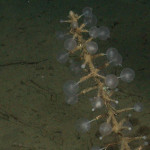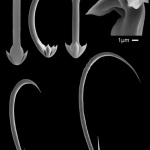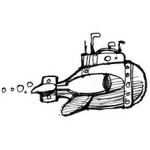 Aquanautix is a PhD marine biologist interested in deep-sea exploration, science, education, and policy. For more posts like these see the new Aquanautix Blog, online since August 2010.
Aquanautix is a PhD marine biologist interested in deep-sea exploration, science, education, and policy. For more posts like these see the new Aquanautix Blog, online since August 2010.
——————————————————————————————-
![]() Biomaterial scientists in Europe have discovered the secret to flexibility in the ‘unbreakable’ glass fibers of the deep-sea glass rope sponge Hyalonema sieboldi. “Artificial glassy fibers are brittle because they lack organics,” said Dr. Hermann Ehrlich of the Institute of Bioanalytical Chemistry at Dresden University of Technology in Germany. “Sponge spicules are unbreakable because of a collagenous network within the siliceous spicules.” The research was published in the journal Nature Chemistry.
Biomaterial scientists in Europe have discovered the secret to flexibility in the ‘unbreakable’ glass fibers of the deep-sea glass rope sponge Hyalonema sieboldi. “Artificial glassy fibers are brittle because they lack organics,” said Dr. Hermann Ehrlich of the Institute of Bioanalytical Chemistry at Dresden University of Technology in Germany. “Sponge spicules are unbreakable because of a collagenous network within the siliceous spicules.” The research was published in the journal Nature Chemistry.
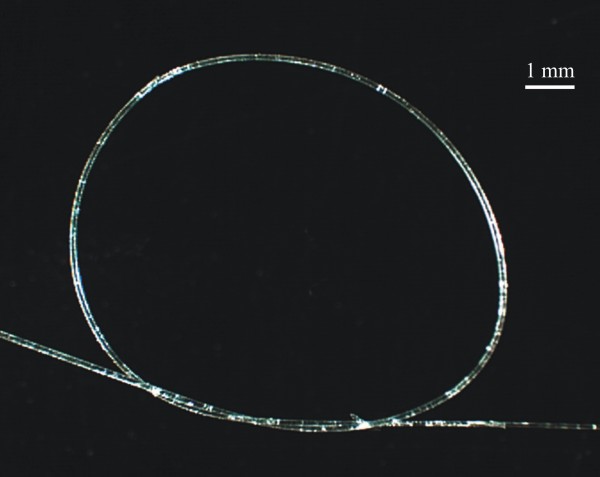
Many scientific readers are familiar with the idea of ‘bio-prospecting’ for ‘bio-pharmaceuticals’ seeking cures for cancer and malaria from plants and animals in the tropical rainforests, coral reefs, and even the deep-sea. Bio-prospecting was a sticking point at this year’s Convention on Biological Diversity in Nagoya, Japan. Developing countries claimed pharmaceutical and cosmetic companies in developed countries were profiting from the genetic diversity in developing countries, so revenue sharing agreements were necessary to prevent ‘bio-piracy’.
Biomaterials science is a lesser-known form of bioprospecting. Similar to biopharmaceuticals, biomaterial science seeks to isolate materials produced in nature and synthesize these products in the laboratory. Biomaterials are used every day in dentistry (ceramics) and medicine (hip replacements, heart valves). More and more, people are considering other applications, like the Gecko’s foot (can it teach us how to crawl up walls like Spider-Man?) or the spicules of silicate sponges (can they improve the design of man-made fiber-optic cables?).
The deep-sea should be a good source of novel biomaterials because deep-sea animals grow under extremes of pressure and temperature. These conditions can be reproduced and applied in other environments, like deep-space, for example.
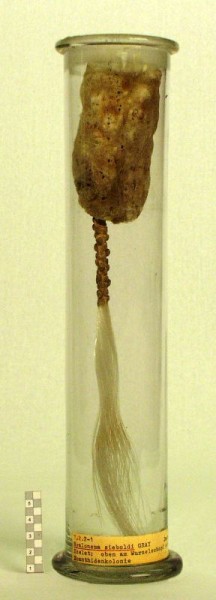
The glass rope sponges studied by Ehrlich and his colleagues came from 5,000 meters depth in the Pacific, but Hyalonema can grow in muddy sediments as deep as 10,000 meters. The silicate fibers of the sponge are durable and flexible. The twisted basal stalk of the sponge is anchored in sediment while the upper parts bend and sway in deep-sea currents, etching a circle around the stalk (Heezen et al 1966).
Dr. Ehrlich states that his research “opens the way for development of novel silica-based biomaterials using genetically modified hydroxylated collagens, peptides, and proteins to mimic the natural way. This way has a 600 million year long history.”
Hexactinellid (glass) sponges are phylogenetically the oldest living organisms, dating back to the Cambrian period, 600 million years ago. Silica-collagen-based biomaterials are therefore highly successful from biological, evolutionary and ecological point of view.
For more on drugs from the sea, click here.
For 19th century musings on Hyalonema, the ‘famous Glass-Rope Sponge’, click here.
Citations:
Ehrlich, H., Deutzmann, R., Brunner, E., Cappellini, E., Koon, H., Solazzo, C., Yang, Y., Ashford, D., et al. (2010). Mineralization of the metre-long biosilica structures of glass sponges is templated on hydroxylated collagen Nature Chemistry, 2 (12), 1084-1088 DOI: 10.1038/nchem.899
HEEZEN, B., SCHNEIDER, E., & PILKEY, O. (1966). Sediment Transport by the Antarctic Bottom Current on the Bermuda Rise Nature, 211 (5049), 611-612 DOI: 10.1038/211611a0


